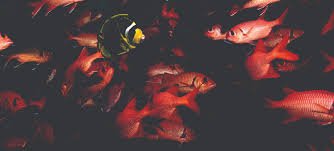
Throughout Chinese history, the dragon has been a central symbol in various forms of art, especially in paintings. Dragons are deeply embedded in Chinese culture, representing power, strength, good fortune, and the embodiment of the emperor’s authority. From ancient dynasties to the more modern periods, the dragon has remained a predominant motif in Chinese art, particularly in paintings produced by emperors, royal courts, and skilled artists. This article will explore the symbolic significance of dragons in Chinese paintings across different dynasties, examining how they were depicted, the meaning behind these depictions, and the cultural context in which they flourished.
The Dragon as a Symbol of Imperial Power
In Chinese culture, the dragon is most closely associated with the emperor, symbolizing his power, authority, and divine right to rule. The dragon was often used in paintings to demonstrate the emperor’s connection with heaven and his ability to govern with celestial authority. This association began during the Han Dynasty (206 BC – 220 AD) and became more prominent during the Tang Dynasty (618 – 907 AD), continuing through to the Qing Dynasty (1644 – 1912 AD).
During these periods, emperors would commission artworks that featured dragons to reinforce their legitimacy as rulers. The depiction of a dragon in paintings was not merely an artistic choice; it was a political statement. The dragon was believed to have divine powers, and its presence in art often signified the emperor’s mandate from heaven. These dragon images were commonly found on royal palaces, government buildings, and imperial garments, often portrayed as powerful, majestic creatures in vibrant colors.
For example, the dragon in Tang Dynasty art was often represented with a long, coiled body and five claws, which became the imperial symbol. Five-clawed dragons were exclusive to the emperor, reinforcing his supreme position as the ruler of China. In paintings from this period, the dragon would often be shown amidst clouds or rising from the sea, symbolizing its power to control both the elements and the fate of the nation.
Dragon Imagery in the Song Dynasty (960 – 1279)
The Song Dynasty was known for its advancements in Chinese painting, particularly in landscape and figure painting. While dragons were still significant symbols of imperial power, artists in the Song period also began to depict them in more subtle and artistic ways. Instead of focusing solely on the dragon’s association with the emperor, Song painters used the dragon as a representation of nature’s power and cosmic harmony.
In Song Dynasty paintings, dragons were often depicted in a more refined and stylized manner. Instead of being the central focus of the composition, they were sometimes portrayed in the background, coiling through clouds or swirling in the wind. This style reflected the Daoist belief in the interconnectedness of all things in the universe, where dragons represented not just imperial authority but also the forces of nature, such as water, wind, and rain. By incorporating dragons into serene landscapes, Song artists conveyed the idea that the emperor’s power was part of a greater cosmic order, where nature and humanity coexisted in harmony.
The influence of Daoism also led to a more spiritual representation of dragons in Song art. In some paintings, dragons were depicted as ethereal beings, almost like celestial spirits, with their forms dissolving into mist or smoke. This type of imagery illustrated the Daoist concept of wu wei (無為), or the way of effortless action, where the dragon’s movements were natural and harmonious with the universe.
Ming Dynasty (1368 – 1644): The Golden Age of Dragon Art
The Ming Dynasty marked a golden age for Chinese art, especially in the realm of imperial painting. The emperor’s connection to the dragon became more pronounced during this period, with artists commissioned to create elaborate paintings that emphasized the power and authority of the ruler. During the Ming period, the dragon was not only used in imperial art but also became a popular subject in decorative items, such as ceramics, textiles, and furniture.
Ming dynasty dragon paintings often depicted the dragon in its most majestic form, with an emphasis on strength and imperial grandeur. The dragon was typically shown as an enormous, serpentine creature with a long, undulating body, adorned with vivid scales, horns, and claws. This imagery was meant to convey the power and dignity of the emperor, who was seen as the earthly representative of the dragon.
In Ming Dynasty paintings, the dragon was often shown flying among the clouds, a symbolic representation of the emperor’s ability to transcend earthly limitations and rise to celestial heights. The dragon’s flight was seen as a metaphor for the emperor’s divine mandate and the eternal flow of the imperial power. The dynamic poses and fluid movement of the dragon in these paintings were designed to evoke a sense of awe and reverence from the viewer, reinforcing the emperor’s supreme status.
Ming-era dragon paintings often incorporated symbolic elements, such as the pearl of wisdom that the dragon was often shown chasing or guarding. This pearl represented the ultimate goal of wisdom and enlightenment, a symbol of prosperity, good fortune, and the emperor’s ability to guide his people toward prosperity. The image of the dragon with the pearl emphasized the idea that imperial rule was linked to divine guidance and the well-being of the nation.
The Qing Dynasty (1644 – 1912): The Dragon and the Imperial Legacy
The Qing Dynasty, the last imperial dynasty of China, continued the tradition of using the dragon as a symbol of imperial power. However, during this period, the portrayal of the dragon became more formalized and codified, particularly during the reign of the Kangxi, Yongzheng, and Qianlong emperors. The dragon was depicted as a sacred creature, and its representation in imperial art followed strict rules. It was considered a symbol of the emperor’s absolute authority and his connection to the heavens.
One of the most notable aspects of Qing Dynasty dragon paintings was the use of the dragon’s five claws. These dragons were reserved exclusively for the emperor, while dragons with fewer claws were used for lower-ranking officials or other members of the royal family. The five-clawed dragon became an essential feature of imperial imagery during the Qing Dynasty, symbolizing the unchallenged power and authority of the emperor.
Qing dynasty paintings often depicted dragons as regal, almost divine figures. They were frequently portrayed in imperial robes, flying amidst clouds, and surrounded by auspicious symbols like the phoenix and the pearl. These paintings were meant to underscore the emperor’s celestial right to rule and to reaffirm the divine order that governed the empire.
One famous painting from the Qing Dynasty that showcases the imperial dragon is the Qianlong Dragon painting, which depicts a magnificent five-clawed dragon coiling through the clouds. This painting is characterized by its intricate detail and dynamic composition, reflecting the grandeur and imperial nature of the Qing court. The depiction of the dragon in this period emphasized both its power and its sacredness, with the emperor often shown as the dragon’s earthly representative.
The Role of the Dragon in Folk Art and Regional Paintings
While the dragon was a prominent symbol in imperial art, it also played an important role in folk art and regional painting traditions. In these artworks, the dragon was often depicted in a more approachable and less formal manner. In regional paintings, the dragon could represent local deities, protectors of communities, and bringers of good fortune. The dragon was also used in paintings for celebrations such as the Chinese New Year or the Dragon Boat Festival, where it was seen as a symbol of joy, vitality, and abundance.
In folk art, dragons were often depicted with exaggerated features, such as larger-than-life claws, scales, and heads. These dragons were more animated and playful, emphasizing their role as protectors and bringers of prosperity to the people. Folk art depictions of dragons were also influenced by local customs, with some regions portraying the dragon in a more serpentine form, while others gave it more human-like traits.
Conclusion: The Enduring Symbolism of the Dragon in Chinese Painting
The dragon in Chinese painting has been a symbol of imperial authority, celestial power, and natural forces for centuries. Across different dynasties, the portrayal of the dragon evolved, reflecting both the political and spiritual changes of the time. From the dynamic and majestic depictions of dragons in the Ming Dynasty to the more ethereal and harmonious representations in the Song Dynasty, the dragon remained a central figure in Chinese art, reinforcing the emperor’s divine mandate and the interconnectedness of all things in the universe.
Whether depicted as an imperial guardian, a symbol of cosmic power, or a protector of the people, the dragon has maintained its significance in Chinese culture and art. Today, the dragon continues to be a prominent feature in Chinese art, both in traditional forms and modern reinterpretations, symbolizing the enduring power and wisdom of the dragon in Chinese society. The symbolism of the dragon in Chinese paintings not only reflects the deep cultural and historical roots of the nation but also continues to inspire artists and viewers alike with its timeless majesty and mystery.





